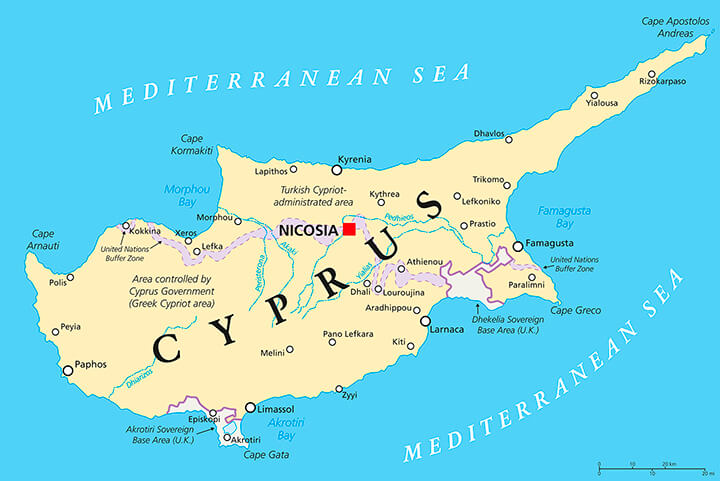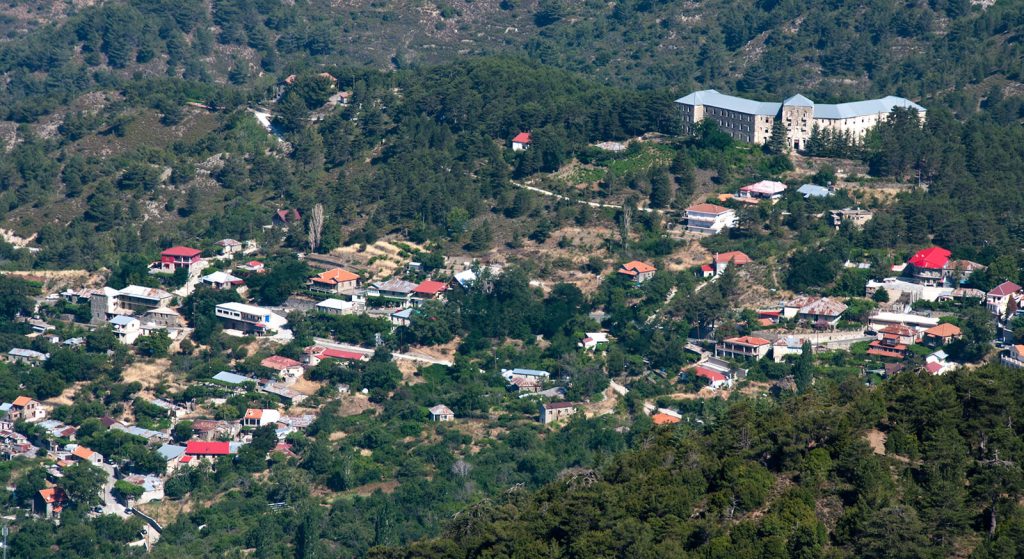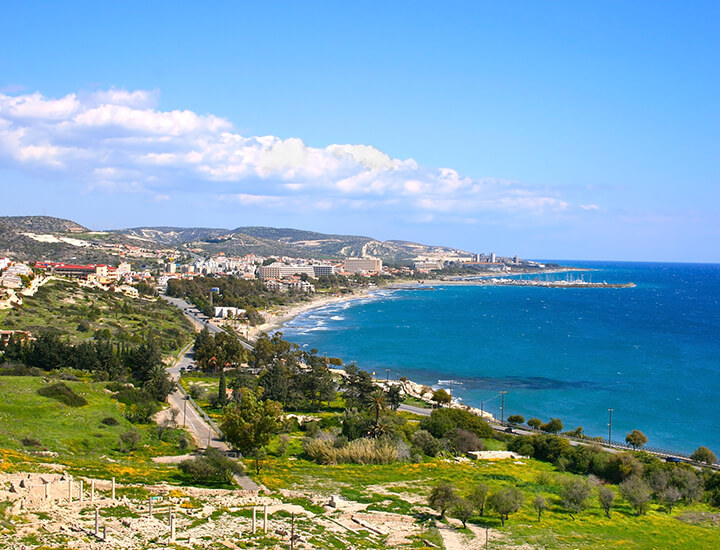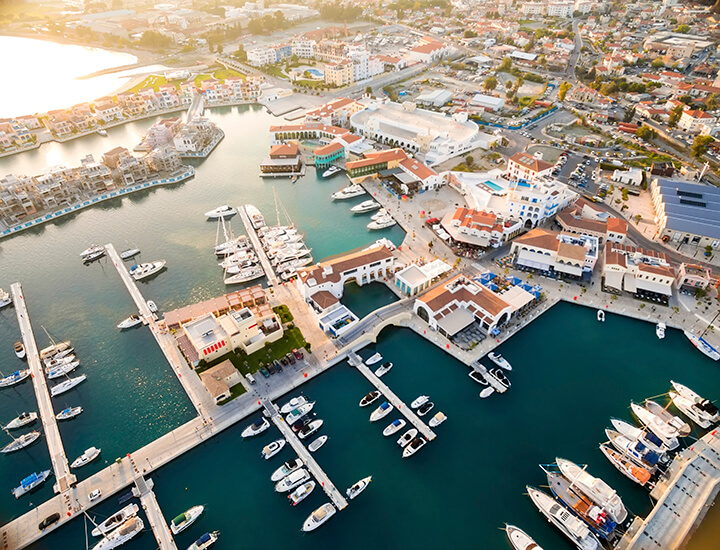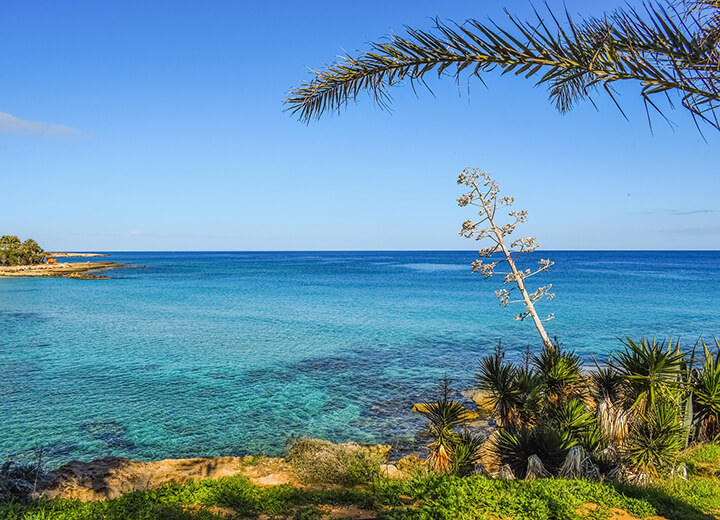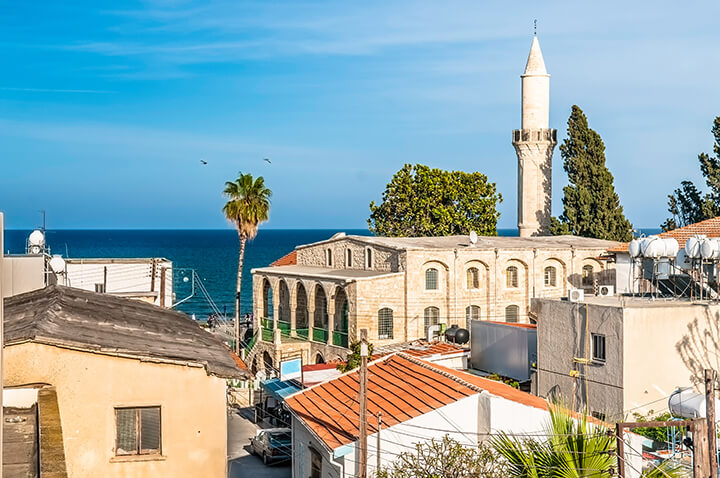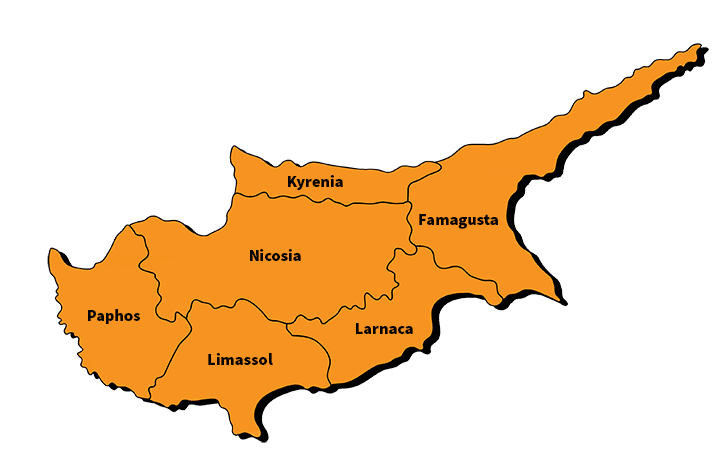
There are six major districts in Cyprus, with each region having the same name as its capital:
Famagusta
Famagusta (Ammóchōstos) was the number one tourist destination in Cyprus during the early 1970’s. The increasing number of tourists caused the construction of many new high-rise buildings and hotels here.
At this time, the Varosha quarter of Famagusta was not only the number one tourist destination in Cyprus but between 1970 and 1974 it was one of the most popular tourist destinations in the world and attracted wealthy, rich and famous stars. Some notable names mentioned are Elizabeth Taylor, Brigitte Bardot, and Raquel Welch.
Since the Turkish invasion and occupation in 1974, Varosha has remained fenced off and is only accessible to Turkish military and UN personnel.
The areas under the Cyprus Government administration include Ayia Napa, Protaras, Paralimni, Deryneia, and Cape Greco which all form part of the Ammochostos region.
Kyrenia
Kyrenia (Kerýneia) is the smallest of the key districts in Cyprus, and the only one that is 100% controlled by the Turkish Military since 1974.
It extends from Cape Kormakitis, through the most significant part of the mountain range of Kyrenia, (commonly referred to as Pentadaktylos).
This range includes the well-known peaks of Kornos, Kyparissovouno, Ayios Ilarionas, Voufavento, and Pentadaktylos, ending in the middle of the northern coast of the island, known as Achaeon Akti. Visit Kyrenia Municipality website.
Nicosia
Nicosia (Lefkosia) is the largest city in Cyprus, known centuries ago as Ledra; it is the capital city of the Republic of Cyprus.
Situated almost at the center of the island, and on the River Pedieos, it is home the Government offices, as well as being the principal business center.
Since the Turkish invasion of 1974, the city has remained the only divided city in Europe, with the Turkish military occupying the Northern part, and the Republic of Cyprus administering the southern section
It is a major trade center for manufacturing of textiles, leather, pottery, plastic, and other products. There are six universities based in Nicosia.
The historic Old Town lies within massive 16th century Venetian Walls and is home to famous museums, Byzantine churches, medieval and neoclassical buildings, all of which stand along narrow scenic roads.
Visit Nicosia Municipality website. See also Places to visit in Nicosia.
Larnaca
Larnaca (Larnaka) is on the southern coast of Cyprus. Lined with rows of palm trees (Phinikoudes), the city of Larnaca is well-known for its picturesque seafront.
Larnaca has two of the official legal points of entry into Cyprus, being the Larnaka International airport, and the Larnaka port. The Larnaka International airport was completely upgraded in 2009, with the official opening to all airlines being on 17th November 2009.
The Larnaka port and marina are also to undergo a major transformation, said to cost €1 billion, with work scheduled to start in 2010, and which will include the construction of a 1,000 berth marina, and luxury hotels and villas.
The reconstruction of the port will consist of facilities for the sizeable third generation cruise ships which cannot currently dock on the island. The project is scheduled to be completed within six years from commencement.
Larnaka is also famous for its salt lake that offers a temporary home every year to thousands of migratory birds, including the pink flamingo.
Visit Larnaca Municipality website. See also Places to visit in Larnaca.
Limassol
Limassol (Lemesos) is the second biggest city in Cyprus and is located on the island’s southern coast at Akrotiri Bay. Lemesos is also the most prominent port in the Mediterranean transit trade.
A planned new marina will have 1000 births available, luxury properties, boating services and entertainment areas. However, the commencement of this grand plan has seen several delays.
Limassol district consists of two UK administered areas, being Akrotiri and Episkopi, known as the Western Sovereign Base Areas. Built between the two ancient cities of Amathus and Kourion, Limassol has become an important tourism, trade, and service-providing center, as well as being Cyprus’ main wine growing region.
A tourist strip runs east along the coast as far as Amathus and upgrades are continuously occurring.
Limassol is famous for its magnificent annual festivals, such as the Carnival and Wine Festival.
Visit Limassol Municipality website. See also Places to visit in Limassol.
Paphos
Paphos (Pafos) is Petra Tou Romiou, the mythical birthplace of Aphrodite, the Greek goddess of love and beauty. It lies to the West of Cyprus.
The district consists of four municipalities being: Paphos, Yeroskipou, Peyia, and Polis Chrysochous. Paphos has become a significant tourist destination, not only for beach lovers but also for those interested in the vast archeological history of Cyprus.
In recent years, it has become the favorite retirement place for British ex-pats. It has a quaint fishing harbor, a sandy coastline with coves and gorges, and a hilly region that climbs up to Paphos forest, as well as a mountainous area.
The official UNESCO list of cultural and natural treasures of the world’s heritage includes the town of Paphos.
Paphos International Airport completed a major upgrade in November 2008, and a new 1,000 berth marina is planned in Kissonerga. However, a commencement date has not yet been agreed.
Visit the Municipality websites of – Paphos – Geroskipou – Pegeia – Polis Chrysochous. See also places to visit in Paphos.
United Nations Buffer Zone
The buffer zone stretches for 180 km from the west near Kato Pyrgos to the east just south of Famagusta. It cuts through the center of the old town of Nicosia, separating the city into southern and northern sections.
There is also a buffer zone around the Kokkina enclave in the west. The width of the zone ranges from 3.3 meters in central Nicosia, to 7.4 km at the village of Athienou.
There is no buffer zone between the eastern British Sovereign Base Area and the area under Turkish Cypriot control. The buffer zone is home to over 10,000 people, and there are several villages and farms located within.
Pyla is the only village in Cyprus where Greeks and Turks live side by side. Other communities in the buffer area are Dhenia, Mammari, Athienou, and Troulli, while Lymbia lies partially within the zone.
See also the five district regions around Mount Olympus in the Troodos Mountains.
See the population of Cyprus figures here.
